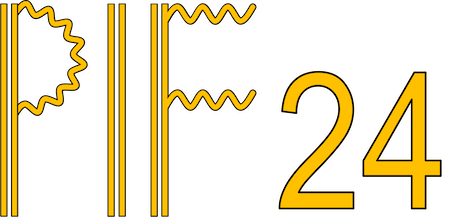Speaker
Description
QED is often considered the most successful theory in physics, as it permits extremely precise predictions in the perturbative regime. In this tutorial talk, we will review experiments that focus coherent laser light into such small space-time volumes that a charged particle passing through the resulting photon density interacts with much more than just one photon, implying that conventional scattering theory breaks down and that the particle is probing the collective electromagnetic field of the laser. If the charge experiences an electric field that is comparable to or larger than the so-called QED critical (“Schwinger”) field in its own rest frame, the domain of Strong-Field QED is entered [1,2].
This talk will focus on electron-laser collisions which are currently being used in various experiments to probe SFQED, such as E-320 at SLAC/FACET-II [3], LUXE [4], and several LWFA-based campaigns (see, e.g., [5]). To this end, the theoretical description of electron and photon beams will be reviewed with a strong focus on the Gaussian approximation. In
particular, we will discuss the challenges of properly synchronizing these beams in both space and time. Furthermore, diagnostics are covered that are capable of delivering shot-to-shot feedback about the actual collision conditions. Finally, we will consider different observables,
with a focus on the scattered electron spectrum and the emitted gamma radiation, and go over detectors that can measure them in practice.
At the end of the talk we will also comment on challenges and opportunities for measuring more extreme parameters, e.g., QED cascades/showers at multi-PW lasers such as Apollon in
France [6,7] or probing the extreme quantum regime using, e.g., beam-beam collisions [8], as well as opportunities enabled by relativistic plasma mirrors [9].
[1] A. Fedotov et al., Advances in QED with intense background fields, Phys. Rep. 1010, 1 (2023).
[2] A. Gonoskov et al., Charged particle motion and radiation in strong electromagnetic fields, Rev. Mod. Phys. 94, 045001 (2022).
[3] T. Smorodnikova (for the E-320 collaboration), talk at this meeting (2024).
[4] H. Abramowicz et al., Technical Design Report for the LUXE Experiment, arXiv:2308.00515 (2023).
[5] E. E. Los et al., Observation of quantum effects on radiation reaction in strong fields, arXiv:2407.12071 (2023).
[6] D. N. Papadopoulos et al., The Apollon laser facility upgrade to the multi-PW level, High-Brightness Sources and Light-Driven Interactions Congress HTu2B.2 (2024).
[7] M. Pouyez et al., Multiplicity of electron- and photon-seeded electromagnetic showers at multi-petawatt laser facilities, arXiv:2402.04501 (2023).
[8] V. Yakimenko et al., Prospect of Studying Nonperturbative QED with Beam-Beam Collisions, Phys. Rev. Lett. 122, 190404 (2019).
[9] N. Za¨ım et al., Light-Matter Interaction near the Schwinger Limit Using Tightly Focused Doppler-Boosted Lasers, Phys. Rev. Lett. 132, 175002 (2024).

